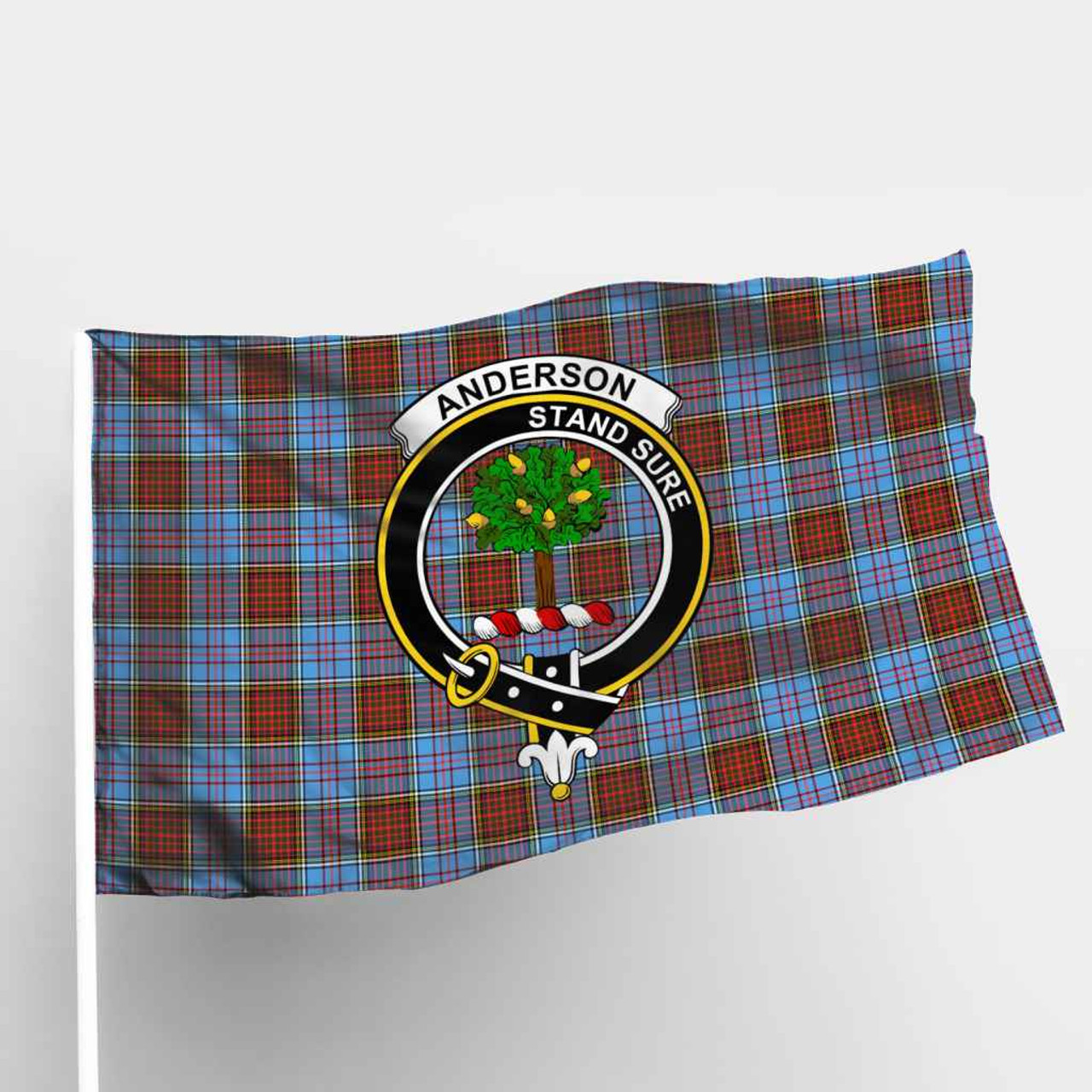Posted by Anna on 13th Dec 2022
Go Back In Time To Learn About Anderson Tartan And Clan
The Anderson Tartan was since the very beginning, and its popularity has only grown since then. This sort of tartan has garnered a lot of interest from people who are curious about its background and origins. Join us as we travel through time to the past and educate ourselves about the Anderson Tartan and Clan.
The origin of the name "Anderson"

Anderson Tartan
The names Anderson and its Gaelic counterpart, MacAndrew, have nuanced histories. The family is a part of the Ross clan, which used to go by the name Aindrea in the distant past (Andrew). Given the proximity of Rossshire to the north coast, it is highly likely that the name has Danish (or Viking!) origins.
It's possible that the names Gillander and Gillanders come from the Gaelic Gilleandrais, which means Andrew's servant. In contrast, Gillanders, who is also of Norse ancestry, is more frequently used in Scandinavia today as Silander and Andersen.
Simply said, Anderson means "Andrew's kid" or "Andrew's son." A patronymic surname is a name in which the word "son" is appended to the father's name. The Gaelic patronymic is created in Scotland by commencing the father's name with mac. Anderson is, therefore, also MacAndrew.
Anderson is sometimes understood to signify "servant of St. Andrew" in addition to "son of Andrew." Scotland's patron saint is St. Andrew. The name is Gilleandrais, which is Gaelic, meaning "St. Andrew's gillie" (gillie is Gaelic for a servant). Thus, MacGillandrish is the son of Gilleandrais.
History of the Anderson tartan clan
The Kinrara manuscript gives information on a claim that the MacAndrews arrived in Badenoch from Moidart around 1400, notwithstanding the assertion that there is no precise place of origin. This may be confirmed by the legends surrounding Iain Beg MacAindrea's retaliation against livestock thieves who ravaged Badenoch. There is no denying, however, the intellectual pedigree that his relatives went on to build.
In many academic fields, the legacy of scholarly erudition has deep historical roots in the Anderson clan. Alexander Anderson, who produced works on geometry and algebra in Paris between 1612 and 1619, is credited with starting this tradition. His relative David Anderson of Finshaugh, who possessed a comparable aptitude for mechanics and mathematics, used it to clear the entrance to Aberdeen port of a sizable boulder.
Crest badge of Anderson clan

Anderson crest. Buy products here.
The practice of wearing the Anderson clan crest as a badge is sanctioned by Scottish heraldic law. Clan chiefs would provide a metal plate with their crest to their followers to wear as a sign of their loyalty to the clan and the chief. A strap and buckle would secure the plate to the wearer's garment, and when not in use, they would be coiled around the plate.
People now wear the crest on a badge rather than a plate with a belt. The Anderson clan crest is depicted as an oak tree in the center of the emblem, with a metal belt and strap representation encircling the crest. The belt is inscribed with the clan's motto, "Stand Sure."
The insignia designates the wearer as a clan chief's relative or adherent. The crest may only be worn without a belt by the clan chief and his heirs.
Do you like Anderson clan crest? Do you want to buy it? Click here to buy!
Anderson Tartan

Anderson Tartan. Buy products here.
The Anderson tartan's history is uncertain, although based on the pattern, it appears to have sprung from one of the more ornate designs that were becoming fashionable in the few years before King George IV visited Scotland in 1822. When the tartan resurgence started to gain traction, there was a ready market for "fancy" patterns that could be worn for personal preference. Many of these tartans were preserved for future generations as clan tartans.
When tartans are compared, subtle changes in the intricate pattern—which appears to be composed of components from older designs—can be seen. Weavers often refer to patterns as "setts."
Because it must be woven on a particular loom and has seven colors (light blue, red, black, yellow, white, and green), the Anderson Tartan is distinctive among Scottish tartans. Scottish tartans often have a color scheme of six or fewer hues.
Our extensive selection of Anderson tartan and Clan goods may be found in the shop's category sections.
For those who like to see the fabric in person before making an online purchase, our items are perfect. The family tartan is something that many of our customers like to keep on hand for crafts projects or to frame and place on the wall.
Click here to buy Anderson tartan items.
The Anderson tartan is how old?

Anderson Tartan
The Anderson tartan was most likely created in the first decade of the nineteenth century. It has the unusual quality of having a light blue background, yet it occasionally appears as grey or turquoise. It has the same quality as the Royal Canadian Air Force's corresponding tartan.
We have all these items for sale. If you are interested in Anderson Tartan, please visit our online store here.
In particular, we have a 15% discount code exclusively for the readers reading this article! Please insert code: VBLOG15 for your cart. Happy shopping!

